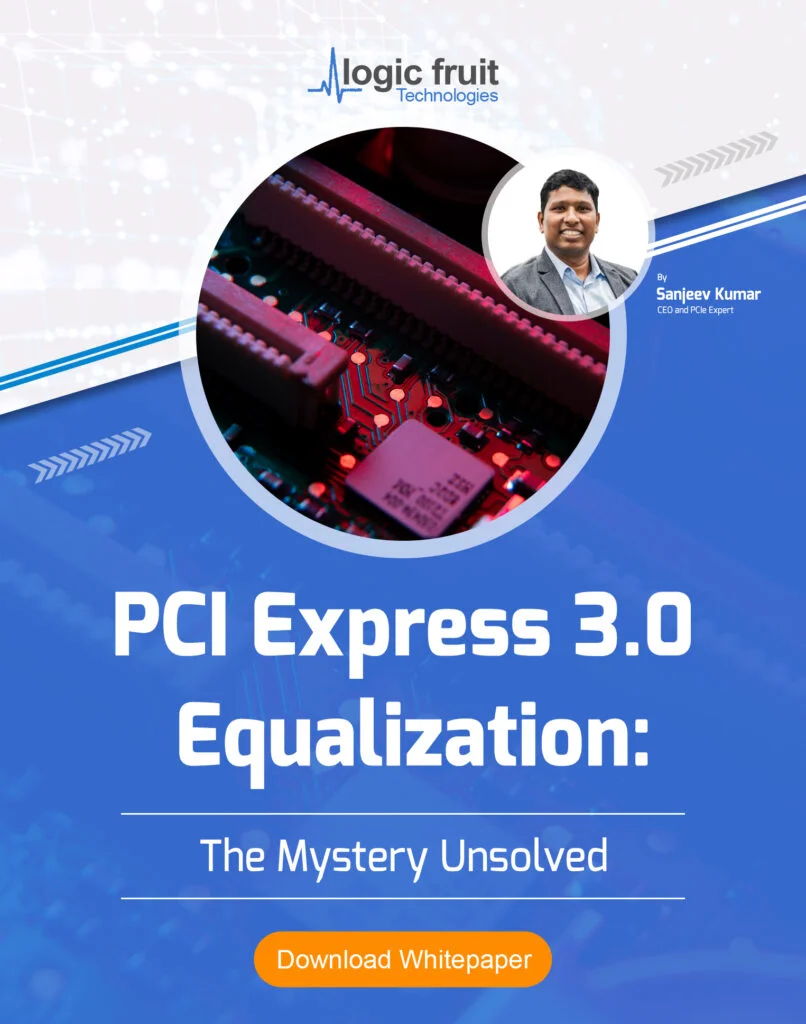FPGA Insights has engaged in an exclusive interview with Kaveh Sadeghikhah, FPGA & Embedded System Engineer at Grizzly Peak Engineering Inc
Q1) Can you provide an overview of your organization and the services/products it offers?
I’m working as an FPGA/SoC engineer for different companies on a project-basis plan with more than 5 years of practical experience. I hold both a master’s of science and a bachelor’s of science in Electrical – Electronics Systems Engineering. The types of projects are quite diverse including digital signal processing, heterogeneous computing, security, artificial intelligence, etc. I’m basically involved in a team of engineers to carry out the tasks and most of the time the interaction is between hardware engineers like me software engineers PCB guys and of course the client.
Q2) Can you explain the benefits of using FPGAs over other types of processors?
FPGAs provide a myriad of benefits when compared with different types of processors. Basically, we must justify the usage of FPGA as not all the applications require them. But when this justification is made then it’s time to enumerate the merits of FPGAs.
They provide benefits such as high performance, reconfigurability, deterministic behavior, power efficiency, security, and scalability among others. The parallelism that is coming from the nature of HDL codes makes us able to enjoy a high level of performance in FPGAs. This performance also proves to be a low level of latency as well as optimized usage of resources. They also are reconfigurable such that the hardware resources can be tailored to meet the requirements of the project. FPGAs can be used together with processors thanks to their flexibility such that it is easier to handle computational tasks between hardware and software. Furthermore, they offer fixed-point implementation on top of the floating-point computation which makes them ideal for an efficient implementation of any algorithm. These are just some examples of their advantages over other types of processors.
Q3) What are the most significant trends observed in the FPGA industry over the past year? How will these trends shape the industry’s future?
In my opinion, the FPGA footprints are more visible in every field of the industry. This trend has been omnipresent in the past few years and started to get involved in different areas such as Artificial Intelligence and its subsets such as Machine Learning and Deep Learning, Edge and Cloud Computing, Computer Vision and ADAS Applications, Data Centers, Integration with Other Technologies such as CPUs, DSPs, and GPUs, Heterogenous Computing, 5G Applications, and Open-Source Applications and usage of languages such as Python.
On the other hand, FPGA manufacturers like Xilinx AMD and Intel also changed their approach to involve as many engineers and designs as possible. For example, the introduction of Zynq UltraScale and Zynq UltraScale+ and recently Versal ACAP devices is aligned with this intention. In other words, even software developers and data scientists who may have no knowledge of RTL scripts and hardware design can be involved in the design process. Thanks to this inclusion the market penetration of FPGAs can dramatically increase, and they will be used for a wider range of applications including niche markets.
Q4) How do you see FPGA development evolving to meet the demands of modern applications and complex workloads?
The development of FPGAs is expected to change as a result of a number of reasons, including market demands, technical breakthroughs, and the difficulties presented by modern applications and complex workloads. I expect FPGA development to evolve in these directions:
- Easier Programmability: The learning curve for programming FPGAs, which is frequently done in VHDL or Verilog-based hardware description languages, has historically been high. High-level synthesis tools that enable programming in more well-known languages like C++ or Python are being developed by the industry in an effort to make FPGAs more approachable for software developers.
- Usage Beside Other Technologies: Integration with other processing technologies like CPUs, GPUs, and specialized AI accelerators will probably increase as FPGAs find more widespread applications. This will produce heterogeneous computing environments that make use of each technology’s strongest points.
- Dynamic Reconfiguration: While FPGAs are already reprogrammable, the capacity to change specific components of the circuit instantly without stopping operations might bring another level of adaptability and performance improvement for demanding workloads.
- Open-Source and Communities: Open-source tools and community contributions can accelerate development, as shown in other technological fields. The FPGA industry is probably going to follow a similar pattern, which will speed up innovation and increase authorization.
- More Efficient Architectures: Future FPGA designs are projected to provide higher power efficiency, enhanced logic density, and improved resource usage. This will assist in meeting the needs of complicated workloads in fields like computational finance, real-time analytics, and machine learning.
- Security Improvements: FPGAs are expected to have more sophisticated hardware-based security features including secure boot, data encryption, and secure key storage in light of the increasing risks to cybersecurity.
Q5) Key drivers behind the increasing adoption of FPGAs in various applications and industries?
FPGAs are becoming more widely used in a variety of applications and sectors, and this is due to several significant factors. Below are a few of them:
- Reusability: The ability to reconfigure the FPGA to carry out various tasks enables the same hardware to be used for diverse applications, lowering costs and boosting value.
- Parallel Computing: Because of their excellent handling of parallel processing, FPGAs are particularly well suited for algorithms that can be divided into parallel tasks, such as those used in data mining, signal processing, and some AI/ML algorithms.
- Power Consumption: FPGAs are appealing for battery-powered and energy-sensitive applications since they are often more power-efficient than general-purpose CPUs and GPUs for specialized workloads.
- Hardware-Based Security: FPGAs are appropriate for safe, sensitive applications because they may provide improved security features including secure boot, hardware-based encryption, and tamper detection.
- System on a Chip (SoC): FPGAs may be combined with other parts, such as CPUs, memory, and I/O, to create a full system on a single chip. This is advantageous from a performance and power standpoint.
- Scalability: It is simpler to develop FPGA-based systems both horizontally (by deploying additional instances) and vertically (by adding more features or capabilities).
Q6) Sectors that stand to benefit the most from FPGA integration, and why?
I think FPGAs can be leveraged in these sectors due to their high performance:
Edge Computing and the Internet of Things: Because FPGAs can process data locally and use limited resources, there is less need to transport data to a centralized data center.
The Cloud and Data Centers: For particular workloads like machine learning inference, large data analytics, and cryptographic algorithms, FPGAs offer enhanced performance.
Aerospace and Defense: In general, FPGAs are strong in harsh environments and offer great performance, including radiation resilience in space applications.
Automotive and ADAS: For applications like autonomous driving and Advanced Driver- Assistance Systems (ADAS), real-time processing and reduced latency are essential.
Financial Industry: For high-frequency trading systems, low latency performance is crucial, and FPGAs may be tailored for certain financial algorithms.
Cybersecurity: When opposed to software-only solutions, secure boot functions, and hardware-level encryption can increase security.
Entertainment and the Media: The high data rates and real-time processing demands of video encoding and decoding may be handled by FPGAs.
Industrial Automation: Real-time control systems work well with FPGAs because they are strong enough to withstand the challenging conditions frequently seen in industrial settings.
Q7) The role of FPGAs in accelerating AI applications and advancements expected in the near future.
FPGAs are boosting Artificial Intelligence (AI) applications in both training and inference, and their use is becoming more and more prevalent. The domains of AI where FPGAs are useful are listed below, along with certain developments that should happen eventually.
- Flexibility: It is simpler to balance performance and accuracy with FPGAs since they can support a range of numerical precisions without the need for additional hardware.
- Streaming Data: FPGAs are excellent at managing streaming data, which is essential for applications like real-time analytics and natural language processing.
- Customization: Unlike GPUs and CPUs, FPGAs may be programmed to run particular algorithms more quickly, resulting in situations where performance per watt is superior.
- FPGAs are very effective in accelerating the inference stage of machine learning algorithms. For real-time decision-making applications like robots, driverless cars, and healthcare diagnostics, their capacity to carry out several computations in parallel and low latency features are advantageous.
- Energy Efficient: Compared to conventional processors, FPGAs often provide higher power efficiency for a variety of activities. In the case of IoT and edge computing devices, when power resources are few, this is essential.
In the near future, we will see:
- Algorithm-Specific Designs: Since FPGAs can be programmed at the hardware level, the next developments may include designs designed to improve the speed and efficiency of particular AI algorithms.
- Simpler programming: The steep learning curve of FPGAs has been one of the main barriers to their wider acceptance in AI. It is anticipated that software tools for high-level synthesis and FPGA programming will become stronger and easier to use.
- FPGAs are perfect for embedded systems since they are getting smaller and more power efficient. Future developments might lead to FPGAs that are specifically designed for edge AI applications.
- FPGAs with AI capabilities (such as AI Engines in Versal ACAPs): Some FPGA producers have already incorporated specialized tensor processing units into their circuits. This pattern of combining the adaptability of FPGAs with specialist AI hardware is probably going to continue.
- Improved Libraries and Frameworks: The implementation and scaling of AI solutions will be made simpler by software assistance in the form of improved libraries and frameworks that are compatible with FPGAs.
Q8) Ensuring the security and integrity of FPGA designs, especially in sensitive applications like finance and defense.
It is crucial to ensure the security and integrity of FPGA designs, particularly in sensitive industries like banking and defense where the stakes are very high. To do this, consider the following tactics and strategies:
- Use a secure boot procedure to ensure that the FPGA configuration is genuine before the device begins to function. Only permitted configurations may be loaded thanks to this security measure.
- Use encryption methods to safeguard the FPGA bitstream. In order to safeguard confidential information and improve security, a lot of contemporary FPGAs come with built-in functionality for bitstream encryption.
- Implement cryptographic bitstream authentication to ensure that only legitimate and approved designs are loaded onto the FPGA.
- Integrate tamper detection hardware and software systems to spot attempts at physical or logical entry. For this, several FPGAs offer built-in functionalities.
- Employ firewalls and network isolation mechanisms to protect the FPGA systems from illegal access.
- Implement thorough recording of all access to and modifications to FPGA settings and keep a close eye on these logs for any indications of illegal or questionable behavior.
- Utilize both white-box and black-box testing techniques often to find any vulnerabilities.
- Hardware Trojans: Use hardware validation procedures and maintain supply chain integrity to protect yourself from hardware Trojans.
Q9) Advice for students and professionals interested in pursuing a career in FPGA development to stay updated with the latest trends and technologies.
The development of FPGAs (Field-Programmable Gate Arrays) is a dynamic industry with ongoing improvements to the available hardware, software tools, and application fields. Following the most recent trends and technologies is essential for anybody interested in a career in FPGA development, including students and professionals. Here are my suggestions to students and professionals who are interested in this field of study:
- Make sure you have a solid understanding of computer architecture, programming languages like Verilog, SystemVerilog, or VHDL, and digital logic design.
- Pursuing an academic degree might help but that’s not always the case!
- You can use online courses and tutorials on a variety of platforms that provide tutorials and courses on the design of FPGAs, HDLs, and other software tools.
- All the above items are essential for your growth, but nothing will be as invaluable as hands-on experience. While theoretical knowledge is vital, practical experience is essential. Use simulation software and FPGA development kits to put what you’ve learned into practice.
- Be sure to be a part of the international community of engineers who are working in the FPGA industry. Participate in conferences and workshops, webinars (offered by vendors and manufacturers for free), online forums, etc.
- Make yourself updated by following the market trends and getting involved in practical projects. This can come at the free cost of reaching out to professionals and engineers in this field. They will provide you with some useful insights that might take you months or even years if you want to do it yourself.
- And in the end, practice, ask, practice, ask, and again practice!














Such a well-structured and engaging article. Thank you!